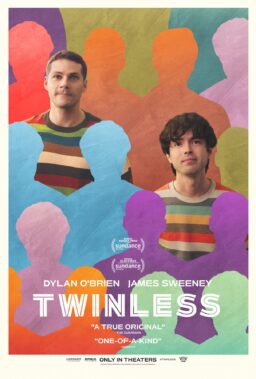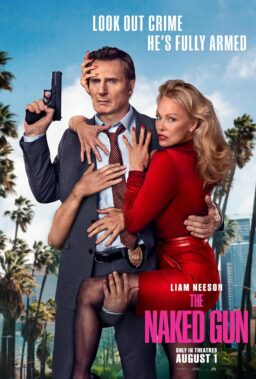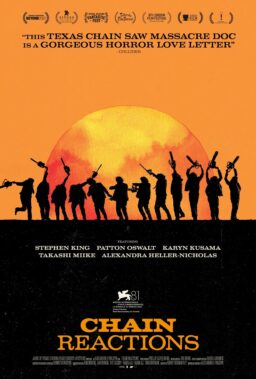CANNES, France–John Sayles has two movies in release these days, but he takes a credit on only one of them. “Limbo” is his Cannes premiere, going into U.S. release on Friday. It’s a story set in Alaska, that starts as a romance and ends as a cliff-hanger. And the other movie, which you may also have heard of, is “The Mummy.”
Sayles makes no bones about it: He supports his filmmaking by working as a script doctor, one of the busiest in Hollywood. “I work fast,” he told a panel of would-be filmmakers here at Cannes. And he gets paid well. Then he takes those paychecks and finances his own kinds of movies, working entirely outside the studio system.
When he’s finished with a film, he offers it as a package for distribution. That gives him more independence than all but a handful of the most powerful directors.
John Sayles, tall and lean and with craggy leading-man looks, is the patron saint of American independent filmmaking. He and his wife and producing partner, Maggie Renzi, have collaborated on good and great films of surprising variety, from “Lone Star” in Texas to “Matewan” in West Virginia “The Secret of Roan Inish” in Ireland to “City Of Hope” in New Jersey to “Passion Fish” in Louisiana to “Men with Guns,” in South America. Starting with such early titles as “Return of the Secaucus Seven,” “The Brother from Another Planet,” “Lianna” and “Baby, It’s You,” Sayles and Renzi have hacked their own path through the underbrush of American filmmaking, demonstrating that it is possible to make your own films in your own way, year after year, successfully. All you need is money.
That’s where “The Mummy” comes in. Yes, Sayles was one of the script doctors on it. He didn’t bring it up; I did. He’s discreet about his house calls. At the Cannes panel, for example, one of his fellow panelists was Ron Howard. Sayles did some work on Howard’s “Apollo 13” screenplay, but neither one mentioned it–not because they wanted to hide it, but because it wasn’t relevant.
Almost every Hollywood movie goes through rewrites, and top writers like Sayles, Elaine May and Robert Towne have big paydays for their moonlighting. It’s the rare script that gets filmed more or less exactly as it was written–although, of course, that would not include Sayles’ screenplays for his own movie.
Script-doctoring can produce funny stories. The doctors are often called in by insecure executives who know little about the business except how to protect their jobs. Sayles’ rewrite on “The Mummy” was several years ago, when director Joe Dante was attached to the project. (“George Romero was on it twice, 15 years apart,” Sayles mused.) Dante told the studio he wanted to set the movie in Los Angeles instead of Egypt. “I don’t know why you wanna make it a contemporary movie,” a Universal exec fretted. “Why don’t you make it a period movie, like the original?”
Sayles snorted gleefully. “Joe had to point out to this guy that the original movie wasn’t a period piece set in 1932. It was actually filmed in 1932–so it was contemporary.”
Like a universe lurking beneath his own films, Sayles’ titles as a script doctor swim like the title character of his “Piranha.” He’s worked on “The Howling,” “Battle Beyond the Stars,” “Sword of the Ninja,” “The Quick And The Dead,” “Mimic,” and countless others. All for money, but all with love: He’s not a snob, and likes action movies even though he doesn’t make them himself.
Or if he does, they’re films like “Limbo,” in which the action, even including some killing, isn’t the point of the film but serves as a way to land the characters in unanticipated situations. The film takes place in Juneau, Alaska, a place so isolated that every road out of town ends in the wilderness. Here he gives us characters who are inhabiting their own kinds of limbo: A cannery worker (David Straithairn) who is ending a marriage and trying to forget the two lives lost on his fishing boat; and a lounge singer (Mary Elizabeth Mastrantonio), ending a relationship, and more or less at the end of the road for club acts. She has a daughter (Vanessa Martinez) who’s fed up with her poor choice in men, but it looks for a time as if this story will involve a happy relationship.
But then things happen. It would be unfair to the movie to discuss the twists in detail. The plot takes a u-turn, and what looked like a love story turns into a wilderness experience. And then into something else.
“The only movie I can think of that resembles it in form was ‘Something Wild.’ by Jonathan Demme,” Sayles told me. This was one afternoon at lunch, the day of the movie’s Cannes screening. “There you start out and it’s a screwball comedy, it could be Ryan O'Neal and Barbra Streisand–and all of a sudden, you’re in this thriller.”
The three main characters end up in a situation, he said, “that’s like a chess game. Every move you make limits the number of possible moves remaining for you.”
What the movie does is confront the characters with the danger of humans and the implacable indifference of the wilderness.
“It’s a 10-minute walk from the center of Juneau to where you can be attacked by a bear, or fall into a glacier,” Sayles said.
“Or you go up kayaking with your friends,” said Maggie Renzi, “and you tip over and you’ll be dead in that water in minutes.”
“In Juneau,” Sayles said, “you can see the tower of the radio station while you’re dying. You don’t have to go that far. One of the things ‘Limbo‘ is about is how we romanticize nature. We’re nostalgic for nature, until we get put into a position where you’re not prepared and you’ve gotta survive. It’s not a picture postcard. It doesn’t care whether you make it or not. Very few people really want to go down the river without the people who are going to make them lunch.”
The film’s ending, which can only be described as unexpected from every possible point of view, struck me as perfect. Some audience members at Cannes booed it, but then at Cannes they’ll boo the typefaces on the title cards. Sayles has arrived at the only possible ending that doesn’t cheat or manipulate–that reflects the reality of the situation the characters are in.
Sayles and Renzi are like the godparents of the Sundance Generation. They’ve been making indee films so long it’s in their nature; their films aren’t a journey to Hollywood studio paychecks, but a destination. When it comes to making films on your own, by yourself, with financing found anywhere, they took the baton from John Cassavetes and passed it on to the Sundancers.
And yet Sayles’ films aren’t exercises in style, like so many Sundance titles. They aren’t about 30-somethings smoking cigarettes and sitting in diners and dabbling in crime and talking in epigrams. They’re about something; about relationships, society, politics.
“Our frame of reference is entirely different,” Renzi said, “because we started doing this 20 years ago, We’re not naturally grouped together with the young people who are making movies like ‘Go‘.”
Or all the other Tarantino-influenced films, I said. “Go” was pretty good, but as a film it’s unthinkable without the example of ‘Pulp Fiction.’ Tarantino has left us such an endless legacy.
“We have a name for ‘Pulp Fiction,” Renzi said, smiling. “We call it ‘The Spawning.’ Because it spawned so many rip-offs. I wish there’d be more spawnings of movies about a place, about a community, about a culture, about a political movement, about an idea. I hear all these people saying, ‘Oh, I love John Sayles.’ I think well, if you love him so much, why don’t you try imitating him a little bit, and see what happens?”











